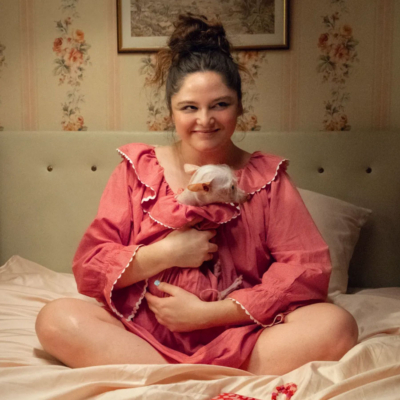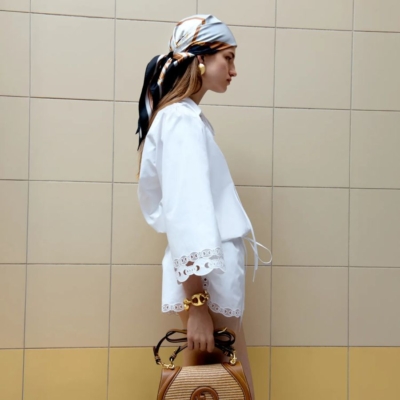POLLY DEVLIN’S REMEMBRANCE OF PEOPLE AND TIMES PAST IS TRIGGERED BY HER COLLECTION OF TREASURED ANTIQUES AND THE BACKSTORIES OF THEIR ACQUISITION …
For new readers and seasoned ones… This is the tenth episode in the loose concoction called The Remembering Rope – a series of memories describing the fruits of my travels and my addiction to collecting –an addiction which skewed my life as all addictions do. Last time I wrote about the child at the aerodrome and how she carried more than seeds and sounds with her when she left Ireland. This is some of what she carried…
What does it take to make someone into a collector? What is the wellspring? Profound things. Never-ending longing. Emotional disengagement. Collectors are obsessive, no use talking sense to them about full houses or full stomachs and not spending money or not eating more or drinking too much. There’s always another beautiful thing around the corner or in the fridge which will make Mummy love me because I’m so clever and the emptiness will be filled and what happened must be forgotten. So it’s an addiction, and an ambiguous solace, like smoking or drinking or gambling (I could turn my hand to those too). They all fill a void for a momentary satisfaction. I’ll die if I don’t have it.
Collecting of course has rewards which other addictions don’t have: according to the psychoanalyst Werner Meunsterberger, a delightful man by the sound of it, who wrote a brilliant and definitive book (when he was 81!) on the phenomenon of collecting, the person in question, moi, because of earlier adverse circumstances – childhood basically – has a need for compensatory objects of one kind or another as if they can provide magic protection and shield the individual from new frustrations and anxieties. Dream on. I quote: “The collector… dreams his way not only into a remote or bygone world, but at the same time into a better one.”
When did I first know I was a Collector? (Even if I didn’t admit it, I was, so much so, from earliest days if I had had to put a name on it, I should have written Collector in my passport.) Just to sell the almost random contents of my Dublin house meant a separate catalogue. So though I didn’t validate it with a name – it was only a wee habit – it was perfect for stopping me doing what I should have been doing – and the refusal to be creative is self-will and is counter to our true nature but I like to think I turned the results of my collecting into an art form.
It certainly was the most fabulous displacement activity because, natch, if I was driving towards Simon’s shop in Adare, I wasn’t at my desk in West London trying to finish the book I had already taken good advance money for … (yet now when I look at the Irish painting by Noel Laura Nisbet I bought there, I feel more for it than for any book I’ve written). I wrote “I bought” there, but I want to write “spotted” there because one of the dynamics for collectors is the belief that they “spot” things before anyone else, hidden treasures waiting for their unearthing by the discerning eye.
There’s always another beautiful thing around the corner.
One of the first things I started collecting were Irish spongeware bowls and mugs. It’s not just that this vernacular crockery has a simple intrinsic beauty but that each piece evokes a different way of life “a remote or bygone world”, where once I lived. That lovely Irish writer Patricia Craig captures spongeware felicitously in words here just as her husband Jeffrey Morgan captures it in the painting below: Spongeware, once denigrated as crockery for the poor, consists of bowls, plates, mugs, jugs in plain white delph arrayed with a variety of sponged-on patterns. Flowers, leaves, birds, cows, cockerels, abstract bands and other simple, delicate markings enliven these often “imperfect” tokens of a bygone austerity and expediency. (Spongeware is impossible to replicate. Confronted with present-day reproductions, you can’t help being struck by the gulf between the idiosyncrasy and the accidental beauty of the originals, and the drab, insipid or vulgar specimens going by the same name today.) I couldn’t have put it better myself. I didn’t! On my dresser here in London, one bowl has green shamrocks encircling it and on one plant the paint is blurred, dripping a bit where perhaps the unknown artist got tired at the end of a long day and dragged her sleeve across it. I Iove that green mistake from 150 years ago and am glad there was no quality control.

I sent a spongeware bowl to a dear friend, artist Jeffrey Morgan, and his thank you was this lovely rendering, pictured above.
So these old bowls and mugs – which I use every day – transport me back to the ancient world and small houses along the lough shore where I grew up. I had entrée to these remote and private places because every so often my father would go off in his car – the only one on the road – to collect the stout bottles that the men who drank in his pub took with them as they left for home, the bottles clanking in bags hanging on the handlebars of their bicycles. They were returnable bottles but no-one would think of ever doing anything like that. Time was short enough without returning Devlin’s bottles.
So we bumped down tiny loanins and boreens to houses at the back of beyond and it is on those journeys that began my passion for wild flowers, for grasses and whins, milkworts, and ferns, marestail and the yellow flags, called shaggins. We were always greeted with overwhelming welcomes and hospitality, and poor as the inhabitants were there was always some coin pressed into the hand. The only communal room was the kitchen with the big chimney fire and swinging over it an iron crane-like contraption with a chain which could be raised and lowered and a hook holding a three-legged iron pot for boiling potatoes. In a richer cottage there might be a cast-iron range called unequivocally, the Modern Mistress, always freshly burnished with black-lead so it gleamed cold and silvery – except where it gleamed red hot – and soda farls and potato farls were made on a griddle every day. We would always be given a triangular slice of soda farl with a spread of freshly churned butter. I don’t want to be sentimental but I have never tasted anything like it since.
On the dresser shelves were the everyday striped and spongeware delft, the tinware, some of it tinkered, and underneath, Coalisland crocks and buckets filled with drinking water fetched from the well up the road. I saw, with mine own eyes, two buckets of water being daily carried on a yoke on a young boy’s shoulders. And of course years later I collected three-legged iron pots, not to mention iron griddles and coolers, called harnens, and crocks. But alas I do not have a yoke (other than my psychological ones. Plenty of nice ones there.)
On my dresser here in London, one bowl has green shamrocks encircling it and on one plant the paint is blurred, dripping a bit where perhaps the unknown artist got tired at the end of a long day and dragged her sleeve across it. I Iove that green mistake from 150 years ago and am glad there was no quality control…
Many such old things were discarded as their owners moved out from under thatched roofs and damp interiors into warm council houses or bungalows and good riddance for much of it, but I saw, at the tail end of a dispensation, what no outsider did, how the Irish dispossessed lived and had lived for hundreds of years.
My great-grandfather had lived in one such house not so many years before. All gone, vanished like snow on the mountain.
The village of Coalisland, about 20 miles away from us, got its name because of the rich coal deposits discovered there in the 17th century. My mother taught near there and sometimes we had to cross the High Bridge over the canal built in the 18th century to link the coal traffic to the lough and thence, hopefully to Dublin. Scaling the narrow high bridge was the highlight of all car journeys ever. It rose high and steep and we, quivering in the back seat, were always sure that just as the car reached the apex, the gears screaming as my father jostled them hopefully, and began to tip across, we would teeter backwards, slide down, and die. I could see it all. A dear holy child too good for this world crushed to death. As we see-sawed I prayed to St Bernadette to save me – I’d seen the film about her and Lourdes in the picture house nearby, so she might still be wafting around waiting to turn me into the angel I was born to be. Never happened.
Anyway, during the building of the canal they found a seam of clay perfect for heavy pottery – like pipes, tiles and those wonderful Coalisland crocks with their slipware brown and yellow glaze. So guess what? I now have many, in all sizes, but now holding fuchsias or primroses. (Coalisland is also my top star place because it’s where the family of Kate and Anna McGarrigle, those amazing singers, came from. I don’t suppose they would have had a chance of performing a sell-out gig at Carnegie Hall in New York if their family had stayed there, where no-one was given much of a chance.)
I grew up in a house with Sarah and Kathleen, who came from one of the houses near the lough shore. (I feel shy now to call them the maids but that is what they were called, just as my mother and father were the Master and the Mistress.) They made all the butter for the household using a coopered wooden plunger churn for the longest arm-breaking time – up to an hour. We would try to take turns but it was heavy work pounding the churning paddle and you needed to keep up a steady rhythm otherwise the cream might turn – it’s a noise I’ll never hear again but of course I collected it my head and I can still summon it up.
Sarah was a dab hand at scooping the butter out, squeezing the excess buttermilk out through muslin (this was after the war and there still was rationing so where did she get muslin?) and patting it into a perfect rectangle. We took the exquisite result for granted.
I have two pairs of beautiful old pats used to shape and stamp the butter, one with ridges, the other with the image of a cow.
Once my father was gathering the bottles outside the house of an old bachelor who was a skillful painter (I could weep when I think of the talent that was wasted all over the district because of the blighted bigoted circumstances of the area). The Painter, as he was known, had just finished a great ceremonial banner for use in a Hibernian march. He proudly showed it to my father and a beautiful thing it was, with its heraldic mottos and symbols – but – but – the main name was spelt wrongly. My father couldn’t bear to tell the old man. He wrestled with the dilemma – had he done right or wrong – for ages after.
At the end of one of the loanins lay the O’Riordan’s thatched cottage with its jamb wall, its front room, its single bedroom and a family of nine people living in it where the older children wove intricate, satisfactory baskets from the sally rods growing around the house.
They were for sale – oh lord, so many years ago. And of course I have one now, on a shelf next to an amazing turf creel, and a woven hooded baby crib, all of them still in lovely, though fragile shape.
While the welcomes were going on and the bottles were being searched out and collected, I crept down behind the house into the mossy hinterland which sank softly under my feet. I once read that when we walk across bogland – across sphagnum – it may take a year or more before the footprints are absorbed and disappear. I want to think that somewhere that child’s impress, so hesitant, so venturesome, is lying decades below the surface, waiting for her return.
LOVETHEGLOSS.IE?
Sign up to our MAILING LIST now for a roundup of the latest fashion, beauty, interiors and entertaining news from THE GLOSS MAGAZINE’s daily dispatches.










